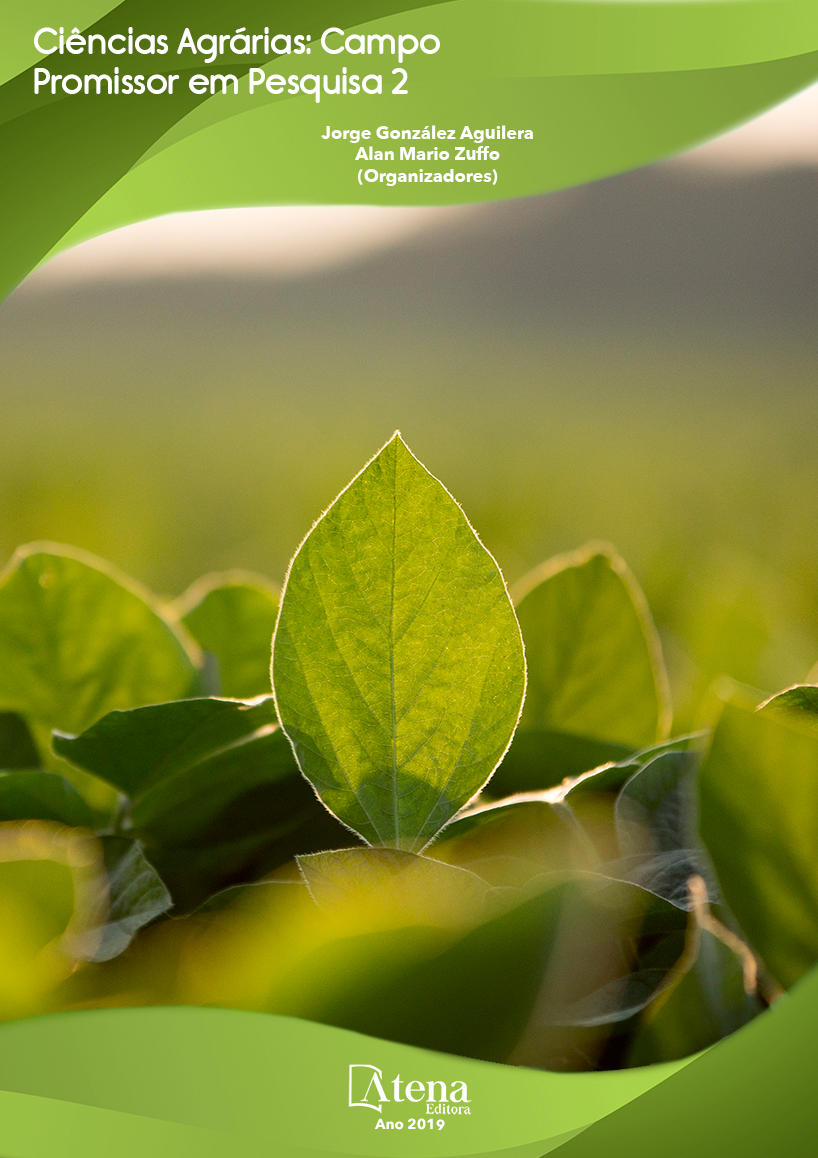
RESPOSTA DA APLICAÇÃO DE FUNGICIDAS NO CONTROLE DA FERRUGEM ASIÁTICA NA CULTURA DA SOJA
A ferrugem asiática da soja é a doença
de maior virulência e rápida disseminação
da cultura da soja no Brasil. Aplicações de
fungicidas estão entre as recomendações de
controle e os produtos comercias a base de
azoxistrobina + benzovindiflupir e trifloxistrobina
+ protioconazol estão entre os mais utilizados
atualmente. Assim, o objetivo deste trabalho
foi analisar a eficiência da aplicação isolada e
da combinação de aplicação destes fungicidas
no controle da ferrugem asiática da soja. Dez
tratamentos com variação nas combinações
dos fungicidas e números de aplicações foram
testadas utilizando duas cultivares de soja. As
aplicações iniciaram na floração (estadio R1)
com reaplicações em intervalos de 14 dias. O
tratamento que apresentou melhor resposta
de produtividade com relação a aplicação de
fungicida foi o tratamento T5 (4 aplicações de
fungicidas de forma alternada: Elatus + Fox
+ Elatus + Fox), o qual apresentou média de
produtividade de 87,01 sc.ha-1, não diferindo
estatisticamente do tratamento T2 (3 aplicações
de fungicidas: Elatus + Fox + Fox) 74,94
sc.ha-1. O tratamento que apresentou maior
peso de mil sementes (175,50 gr) também foi
o T5 não diferindo estatisticamente de outros
seis tratamentos. A utilização dos fungicidas
testados, aplicados de forma alternada
no controle da ferrugem asiática da soja,
apresentaram melhor resposta com relação
a redução de produtividade proporcionando
maior peso de mil sementes.
RESPOSTA DA APLICAÇÃO DE FUNGICIDAS NO CONTROLE DA FERRUGEM ASIÁTICA NA CULTURA DA SOJA
-
DOI: 10.22533/at.ed.16019200622
-
Palavras-chave: controle químico, Glycine max, Phakopsora pachyrhizi
-
Keywords: chemical control, Glycine max, Phakopsora pachyrhizi
-
Abstract:
Asian soybean rust is the most
virulent disease and rapid spread of soybean
cultivation in Brazil. Fungicide applications
are among the control recommendations and
commercial products based on azoxystrobin
+ benzovindiflupir and trifloxystrobin +
prothioconazole are among the most commonly
used today. Thus, the objective of this work was
to analyze the efficiency of the isolated application and the combination of application
of these fungicides in the control of soybean Asian rust. Ten treatments with varying
combinations of fungicides and application numbers were tested using two soybean
cultivars. The applications started flowering (stage R1) with reapplications at 14 day
intervals. The treatment that presented the best productivity response in relation to
fungicide application was the T5 treatment (4 applications of fungicides alternately:
Elatus + Fox + Elatus + Fox), which presented a mean productivity of 87.01 sc.ha- 1, not
statistically differing from T2 treatment (3 applications of fungicides: Elatus + Fox + Fox)
74.94 sc.ha-1. The treatment with the highest weight of one thousand seeds (175.50
g) was also the T5, which did not differ statistically from the other six treatments. The
use of the tested fungicides, applied alternately in the control of soybean Asian rust,
presented a better response in relation to the reduction of productivity, providing a
greater weight of one thousand seeds
-
Número de páginas: 15
- Bruno Machado Salbego
- Henrique Schaf Eggers
- Dener Siveira Massem
- Evandro Jost


